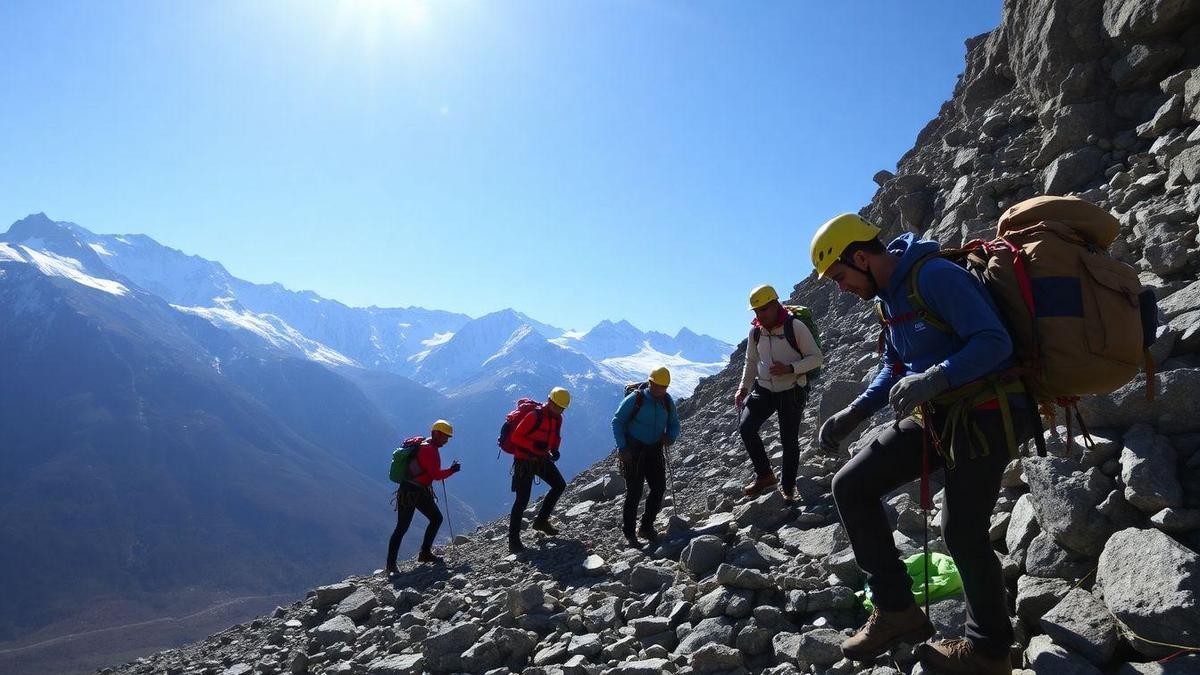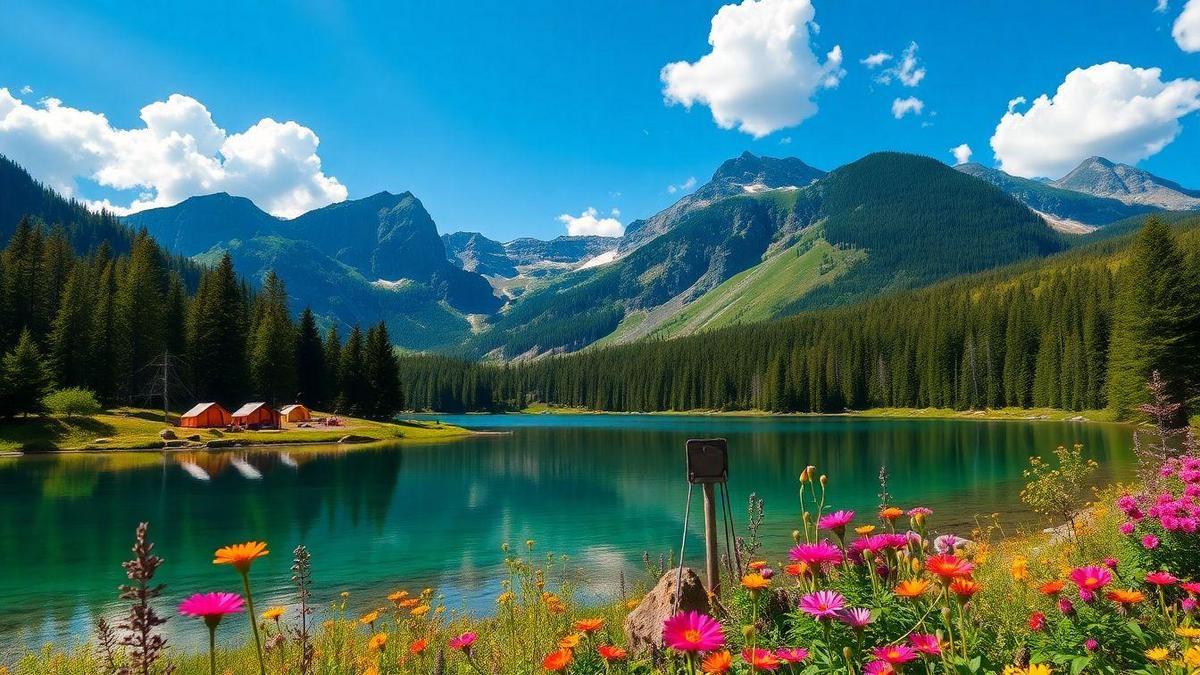
Understanding Altitude Sickness and Its Risks
What is Altitude Sickness?
When you climb a mountain, you might face altitude sickness. This occurs when you ascend to high places too quickly, and your body struggles to get enough oxygen. It’s like your body is saying, Hey, I need a little more time to adjust!
Symptoms to Watch For
If you’re planning to scale new heights, pay attention to how you feel. Here are some common symptoms of altitude sickness you should keep an eye on:
- Headache: This can be mild or severe.
- Nausea: You might feel like you want to throw up.
- Dizziness: You may feel lightheaded or unsteady.
- Fatigue: You might feel more tired than usual.
- Shortness of breath: Breathing may feel harder than normal.
Importance of Recognizing Symptoms
Recognizing these symptoms early is crucial. If you notice them, it’s a sign to take a step back. Ignoring these signs can lead to serious health issues. Remember, your safety comes first. If you catch these symptoms early, you can take action, like descending to a lower altitude or resting.
Acclimatization Strategies for Safe Climbing
How Acclimatization Works
When you climb a mountain, your body needs time to adjust to the higher altitudes. This process is called acclimatization. As you go higher, the air gets thinner, which means there’s less oxygen. Your body reacts by producing more red blood cells to carry oxygen. This takes time, and rushing it can lead to altitude sickness, which is not something you want to experience on your adventure. For more effective strategies, consider exploring best practices for acclimatization.
Tips for Effective Acclimatization
To make your climbing experience safer and more enjoyable, here are some simple tips for acclimatization:
- Take Your Time: Don’t rush your ascent. Allow your body to adjust.
- Stay Hydrated: Drink plenty of water to help your body cope with the altitude.
- Listen to Your Body: If you feel dizzy or sick, it’s essential to take a break or go back down.
- Eat Well: Eating nutritious foods can help keep your energy levels up. For more on nutrition, check out nutrition tips for maintaining energy.
Gradual Ascent is Key
One of the best ways to acclimatize is to ascend gradually. Here’s a simple table to illustrate this:
| Altitude (Feet) | Recommended Days to Acclimatize |
|---|---|
| 8,000 – 10,000 | 1-2 Days |
| 10,000 – 12,000 | 2-3 Days |
| 12,000 – 14,000 | 3-4 Days |
| 14,000 – 16,000 | 4-5 Days |
Following this table can help you plan your climb effectively. Remember, it’s all about taking small steps so your body can adjust without feeling overwhelmed.
Essential Gear for Climbing Altitude Safety
Must-Have Safety Gear
When you set out to conquer a mountain, having the right gear is like having a trusty compass in the wild. It keeps you safe and on track. Here are some must-have safety items you shouldn’t leave behind:
- Helmet: Protects your head from falling rocks and bumps.
- Harness: Keeps you secure while climbing.
- Climbing Shoes: These provide grip and comfort on rocky surfaces.
- Ropes: Essential for safety and support during climbs.
- First Aid Kit: A lifesaver in case of injuries. For more on first aid, visit first aid measures for climbing.
- Navigation Tools: Maps and compasses help you find your way. Don’t forget to consider weather precautions for safe climbing.
Choosing the Right Equipment
Selecting the right gear can feel overwhelming, but it doesn’t have to be. Focus on what suits your climbing style and the mountain’s challenges. Ask yourself:
- What type of climbing are you doing? (Rock, ice, or mixed)
- What’s the weather like? (Cold, wet, or sunny)
- How long will you be out there? (A few hours or several days)
Importance of Quality Gear
Quality gear is your best friend in the mountains. It can make the difference between a safe climb and a risky one. Here’s why:
| Quality Gear | Benefits |
|---|---|
| Durable Materials | Lasts longer and withstands harsh conditions. |
| Better Performance | Helps you climb more efficiently. |
| Increased Safety | Reduces the risk of accidents. |
When you invest in good gear, you’re investing in your safety. It’s worth every penny to keep yourself protected while you enjoy the beauty of nature.
Emergency Response in Mountain Expeditions
Preparing for Emergencies
When you’re out in the mountains, it’s like stepping into a whole new world. But sometimes, things don’t go as planned. That’s why preparing for emergencies is crucial. You want to be ready for anything that might come your way. Here are some key steps to keep in mind:
- Know the Route: Familiarize yourself with the trail. Bring a map and a compass, and don’t rely solely on your phone.
- Share Your Plans: Tell someone where you’re going and when you expect to return. This way, if something goes wrong, help can be sent your way.
- Pack a Safety Kit: Include items like a whistle, flashlight, and extra food. These can be lifesavers in tough situations.
First Aid Essentials for Climbers
Having a first aid kit is like having a safety net. You never know when you might need it. Here are some essential items to include:
| Item | Purpose |
|---|---|
| Adhesive Bandages | For cuts and scrapes |
| Gauze and Tape | To dress larger wounds |
| Antiseptic Wipes | To clean wounds |
| Pain Relievers | For headaches or muscle aches |
| Emergency Blanket | To keep warm in case of injury |
Knowing how to use these items can make a big difference. Take a first aid course before your trip, so you feel confident in handling emergencies.
Knowing When to Seek Help
Sometimes, you might find yourself in a pickle. It’s important to recognize when to seek help. If you or someone in your group is injured and can’t continue, don’t hesitate to call for assistance. Here are some signs that it’s time to reach out:
- Severe pain or injury that prevents movement
- Signs of hypothermia, like shivering and confusion
- Difficulty breathing or chest pain
Remember, it’s better to be safe than sorry. If you’re unsure, trust your instincts and ask for help.
High Altitude Climbing Tips for Beginners
Starting Your Climb Right
Before you even lace up your boots, take a moment to prepare yourself mentally and physically. Think of climbing like a dance with nature; you need to learn the steps before you hit the floor. Start with a warm-up routine to get your muscles ready. Remember, every mountain is different, so research the specific challenges you might face. For mental preparation, check out mental preparation strategies.
Staying Hydrated and Nourished
Hydration is key when you’re climbing. Your body needs water like a car needs fuel. Here’s a simple checklist to keep you on track:
- Drink water regularly: Aim for at least half a liter every hour.
- Snack often: Pack high-energy snacks like nuts, granola bars, or dried fruits.
- Avoid heavy meals: Stick to lighter foods that won’t weigh you down.
| Food Type | Best Choices | Why It Matters |
|---|---|---|
| Snacks | Nuts, granola bars, fruits | Quick energy boost |
| Hydration | Water, electrolyte drinks | Keeps you alert and strong |
| Meals | Light sandwiches, pasta | Easy to digest on the go |
Importance of Rest During Climb
Taking breaks is like hitting the pause button on a movie; it gives you a moment to catch your breath and recharge. Don’t rush your climb. Instead, find a scenic spot and take a moment to enjoy your surroundings. Listen to your body. If you’re feeling tired, it’s perfectly okay to rest.
Remember: Climbing isn’t a race; it’s about enjoying the journey.
Hypoxia Awareness and Its Prevention
What is Hypoxia?
Hypoxia happens when your body doesn’t get enough oxygen. When you climb high mountains, the air gets thinner, and there’s less oxygen available. This can make you feel dizzy, tired, or even confused. It’s like trying to breathe through a straw—harder than it should be!
Strategies to Prevent Hypoxia
To keep yourself safe while climbing, you can take some simple steps:
- Acclimatize Gradually: Spend a few days at a lower altitude before climbing higher. This helps your body adjust.
- Stay Hydrated: Drink plenty of water. Dehydration can make hypoxia worse.
- Climb Slowly: Don’t rush. Give yourself time to adapt to the altitude.
- Eat Well: Fuel your body with nutritious foods. This gives you the energy you need. For more on nutrition, refer back to nutrition tips.
Here’s a quick table to summarize these strategies:
| Strategy | Description |
|---|---|
| Acclimatize Gradually | Spend time at lower altitudes first |
| Stay Hydrated | Drink enough water to stay hydrated |
| Climb Slowly | Take your time to adjust to the altitude |
| Eat Well | Choose nutritious foods for energy |
Recognizing the Signs of Hypoxia
Knowing the signs of hypoxia is crucial. If you notice any of these symptoms, it’s important to act quickly:
- Headache
- Nausea
- Dizziness
- Shortness of breath
- Confusion or difficulty concentrating
If you or someone else feels these symptoms, it’s best to descend to a lower altitude. Remember, your safety is the top priority!
Frequently Asked Questions
What are some basic climbing altitude safety precautions for mountain expeditions?
Stay hydrated. Drink plenty of water.
Take it slow. Give your body time to adjust.
Listen to your body. Rest if you feel dizzy or tired.
How can I prevent altitude sickness while climbing?
Acclimatize gradually. Go up slowly, about 1000 feet a day.
Stay fit. Keep your body strong for the climb.
Avoid alcohol. It can make symptoms worse.
What should I do if I start feeling symptoms of altitude sickness?
Stop climbing. Go down to a lower altitude.
Rest and hydrate. Drink water or electrolyte drinks.
Seek help if symptoms worsen. Don’t ignore them!
How can I prepare for high-altitude climbs?
Train in advance. Build your strength and endurance.
Learn about climbing altitude safety precautions for mountain expeditions.
Pack wisely. Bring extra layers and snacks.
Should I climb alone or with a group for safety?
Always climb with a buddy or group. It’s safer that way.
Watch each other closely for symptoms of altitude sickness.
Support each other. A team can make the experience better!


